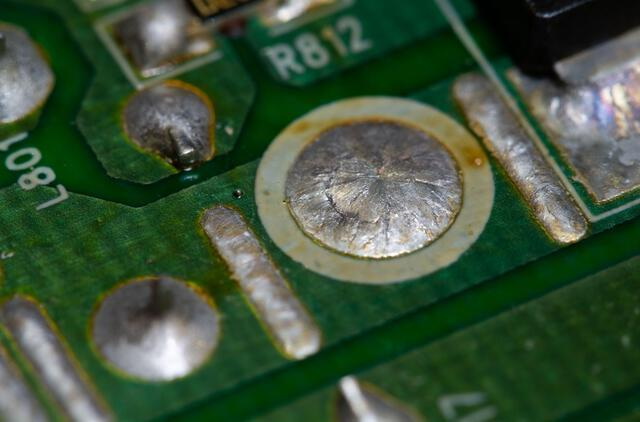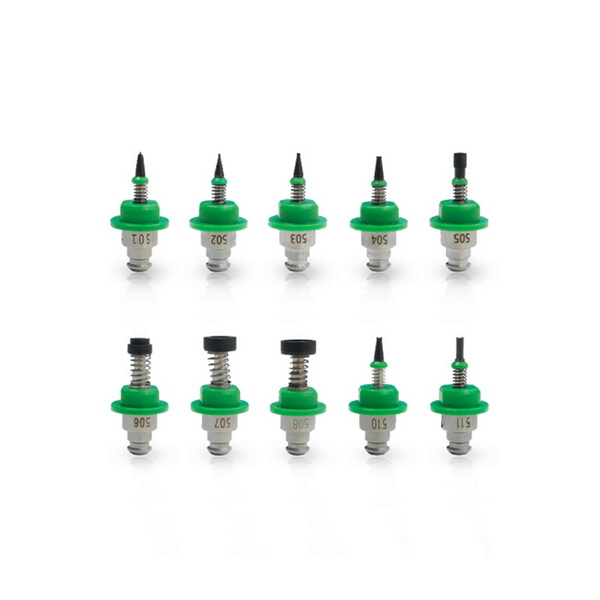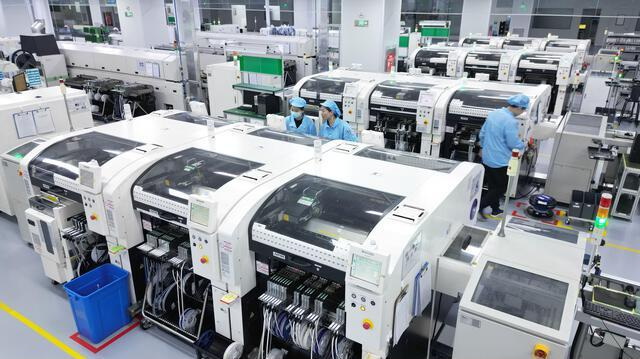Content Menu
● Understanding SMT Feeders
● The Role of Smart SMT Feeders
>> 1. Error Prevention Through Automation
>> 2. Real-Time Feedback Mechanisms
>> 3. Enhanced Traceability and Inventory Management
>> 4. Improved Setup Efficiency
>> 5. Dynamic Feeder Management
● The Impact of Smart SMT Feeders on Production Quality
● Advanced Features of Smart SMT Feeders
>> 1. Machine Learning Algorithms
>> 2. Integration with Manufacturing Execution Systems (MES)
>> 3. User-Friendly Interfaces
>> 4. Remote Monitoring Capabilities
● Challenges in Implementing Smart SMT Feeders
● Future Trends in Smart SMT Feeding Technology
● Conclusion
● FAQ
>> 1. What types of components can be used with smart SMT feeders?
>> 2. How do smart feeders improve setup times?
>> 3. Can smart SMT feeders be retrofitted onto existing machines?
>> 4. What is the ROI for investing in smart SMT feeders?
>> 5. How do smart feeders contribute to inventory management?
In the world of electronics manufacturing, precision is paramount. Surface Mount Technology (SMT) has revolutionized the way electronic components are assembled onto printed circuit boards (PCBs). Central to this process is the SMT feeder, a device responsible for delivering components to pick and place machines. As technology has advanced, so have feeders, leading to the development of smart SMT feeders. These intelligent systems play a crucial role in minimizing component placement errors, enhancing efficiency, and improving overall production quality.

Understanding SMT Feeders
An SMT feeder is an essential component of the SMT assembly line. It holds and feeds electronic components—such as resistors, capacitors, and integrated circuits (ICs)—to the pick and place machine. The feeder ensures that components are presented in the correct orientation and at the right time for placement on PCBs. Various types of feeders exist, including:
- Tape Feeders: Use reels of carrier tape to hold components.
- Stick Feeders: Hold components in a linear stick format.
- Vibratory Bowl Feeders: Utilize vibration to orient and feed components.
- Tray Feeders: Use trays for larger or non-standard components.
Each type is designed to accommodate specific component sizes and shapes, optimizing the assembly process for different production needs.
The Role of Smart SMT Feeders
Smart SMT feeders incorporate advanced technologies such as RFID (Radio Frequency Identification) and intelligent software systems to enhance their functionality. These feeders provide several key benefits that help minimize component placement errors:
1. Error Prevention Through Automation
Smart feeders automate the verification process of component placement. By using RFID tags or barcode scanning, these feeders can confirm that the correct component is loaded in the appropriate position before it reaches the pick and place machine. This automated check significantly reduces human error associated with manual loading processes.
2. Real-Time Feedback Mechanisms
Smart feeders offer real-time feedback on component status. They can alert operators when component counts are low or if a feeder runs out of components. This proactive approach ensures that operators can replenish supplies before they run out, preventing interruptions in production that could lead to errors.
3. Enhanced Traceability and Inventory Management
With smart feeders, manufacturers can achieve better traceability of components throughout the production process. Each feeder can track its usage history, enabling manufacturers to monitor which components are being used most frequently and adjust inventory levels accordingly. This data-driven approach helps ensure that the right components are always available when needed.
4. Improved Setup Efficiency
Setting up pick and place machines often involves manually checking and verifying component placements against programming tables. Smart feeders streamline this process by electronically linking feeders to their corresponding components via unique identifiers. This reduces setup time and minimizes the risk of incorrect placements due to human oversight.
5. Dynamic Feeder Management
Smart feeders can dynamically manage their operations based on real-time data from the production line. For example, they can adjust feeding speeds or change component allocations based on current production demands or machine performance metrics. This adaptability helps maintain optimal workflow and reduces the likelihood of errors during high-speed operations.
The Impact of Smart SMT Feeders on Production Quality
The integration of smart feeders into SMT assembly lines has profound implications for product quality:
- Reduced Rework Costs: By minimizing placement errors, manufacturers can significantly reduce rework costs associated with correcting faulty assemblies.
- Higher Throughput Rates: With fewer errors leading to downtime, production lines can operate more efficiently, increasing overall throughput rates.
- Enhanced Product Reliability: Accurate component placement directly correlates with product reliability. Smart feeders help ensure that components are placed correctly every time, leading to higher-quality end products.

Advanced Features of Smart SMT Feeders
In addition to basic functionalities, many smart SMT feeders come equipped with advanced features that further enhance their effectiveness:
1. Machine Learning Algorithms
Some smart feeders utilize machine learning algorithms to analyze historical data related to component placement and feeder performance. By identifying patterns in previous operations, these systems can optimize feeding strategies over time, reducing errors even further.
2. Integration with Manufacturing Execution Systems (MES)
Smart feeders can be integrated with MES software to provide a comprehensive view of the entire manufacturing process. This integration allows for better coordination between different stages of production, ensuring that any changes in one area are reflected across all systems.
3. User-Friendly Interfaces
Modern smart feeders often feature user-friendly interfaces that allow operators to easily monitor system performance and make adjustments as needed. These interfaces can include touch screens with intuitive controls, making it easier for less experienced operators to manage complex feeding systems effectively.
4. Remote Monitoring Capabilities
With advancements in IoT (Internet of Things) technology, many smart SMT feeders now offer remote monitoring capabilities. Operators can track feeder performance from anywhere via mobile devices or computers, allowing for quick responses to potential issues without needing to be physically present on-site.
Challenges in Implementing Smart SMT Feeders
While smart SMT feeders offer numerous advantages, implementing them does come with challenges:
- Initial Investment Costs: The upfront costs associated with purchasing and integrating smart feeders can be significant. However, many manufacturers find that long-term savings outweigh these initial expenses.
- Training Requirements: Operators may require training to effectively utilize advanced features of smart feeders. Ensuring staff is adequately trained can take time and resources.
- System Compatibility: Integrating smart feeders into existing manufacturing systems may pose compatibility issues with older machinery or software platforms.
Despite these challenges, many companies recognize the long-term benefits of adopting smart feeder technology as part of their manufacturing strategy.
Future Trends in Smart SMT Feeding Technology
As technology continues to evolve, several trends are emerging in the realm of smart SMT feeding:
- Increased Automation: The trend towards greater automation in manufacturing processes will likely lead to even smarter feeder systems capable of self-diagnosing issues and performing maintenance tasks autonomously.
- Enhanced Data Analytics: As big data analytics becomes more prevalent in manufacturing environments, smart feeders will increasingly leverage data insights for predictive maintenance and operational optimization.
- Sustainability Initiatives: Manufacturers are becoming more conscious of their environmental impact; therefore, future smart feeder designs may focus on energy efficiency and waste reduction strategies.
- Collaborative Robotics (Cobots): The integration of cobots alongside smart feeders could further streamline assembly processes by allowing robots to assist human operators in handling complex tasks without compromising quality or speed.
Conclusion
Smart SMT feeders represent a significant advancement in electronics manufacturing technology. By automating verification processes, providing real-time feedback, enhancing traceability, improving setup efficiency, and allowing for dynamic management of feeding operations, these intelligent systems play a vital role in minimizing component placement errors.
As manufacturers continue to seek ways to improve efficiency and product quality while reducing costs, smart feeders will undoubtedly become an integral part of modern SMT assembly lines.

FAQ
1. What types of components can be used with smart SMT feeders?
Smart SMT feeders can accommodate a wide range of electronic components including resistors, capacitors, integrated circuits (ICs), and other small parts typically supplied on tape or in trays.
2. How do smart feeders improve setup times?
Smart feeders improve setup times by automating the verification process through RFID or barcode scanning, linking each feeder with its corresponding components electronically.
3. Can smart SMT feeders be retrofitted onto existing machines?
Yes, many smart feeder systems can be retrofitted onto existing machines using RFID technology or other upgrades without needing to replace entire setups.
4. What is the ROI for investing in smart SMT feeders?
The return on investment (ROI) for smart SMT feeders is typically realized within 3 to 6 months due to reduced setup times and minimized errors leading to lower rework costs.
5. How do smart feeders contribute to inventory management?
Smart feeders track component usage in real-time, allowing manufacturers to maintain optimal inventory levels by providing data on which components are used most frequently.




















